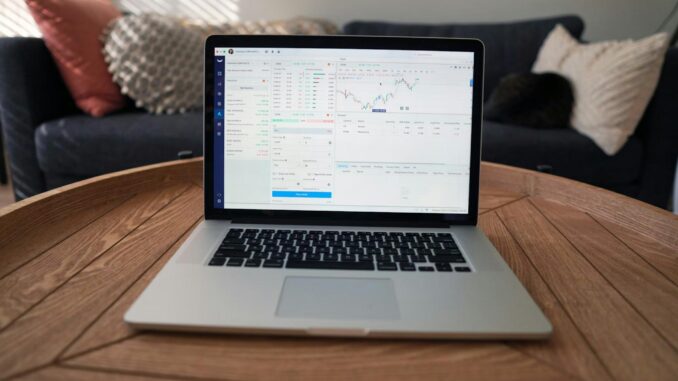
In the fast-paced world of forex trading, every millisecond counts. While skilled human traders can certainly find success, there’s no denying the advantages that automation through algorithmic trading strategies can provide. With the power of technology, forex traders can execute trades with lightning speed, remove human emotion from the equation, and implement advanced quantitative models. Let’s explore the principles behind algorithmic trading and the compelling benefits it offers.
What Are Algorithmic Trading Strategies?
At its core, an algorithmic trading strategy is a set of predefined rules coded into a computer program that automatically monitors the markets and executes trades based on those rules. These rules can factor in variables such as price movements, volume, technical indicators, economic data releases, and much more.
With the reliable Metatrader 4 trading software, traders can develop their own automated strategies or use existing robots and other solutions. By backtesting strategies against historical data, traders can identify and optimize profitable algorithms before deploying them in live markets.
The Appeal of Algorithmic Trading
The rise of algorithmic trading in the forex market can be attributed to several compelling benefits:
- Speed and Efficiency: Algorithms can react to market changes and execute trades at speeds far exceeding human capabilities, capitalizing on short-term market inefficiencies.
- Emotional Discipline: By removing human emotions like fear, greed, and impulsivity from the trading process, algorithmic strategies can make more rational and consistent decisions.
- Diversification: Traders can deploy multiple algorithmic strategies simultaneously, diversifying their exposure and increasing their chances of success.
- Consistent Strategy Implementation: Once an effective algorithm is developed, it can be consistently applied across various market conditions without deviating from the predefined rules.
The Principles Behind Algorithmic Forex Trading
Successful implementation of such strategies relies on several key principles:
- Quantitative Models: Rather than relying on human intuition or discretionary decision-making, these strategies utilize quantitative models based on mathematical rules and statistical analysis of market data.
- Automated Execution: Once the trading rules are defined, the algorithms can automatically generate orders and execute trades without human intervention, ensuring swift and precise order entry.
- Risk Management: Algorithms can be programmed with advanced risk management techniques, such as position sizing, stop-loss orders, and dynamic adjustments based on market conditions.
- Backtesting and Optimization: Prior to live trading, algorithmic strategies are thoroughly backtested against historical data to evaluate their performance and optimize their parameters for maximum profitability.
Risks and Considerations
While automated forex trading offers numerous advantages, it’s essential to consider the potential risks and challenges:
- Algorithm Design and Testing: Developing and testing robust algorithmic strategies requires significant expertise in programming, quantitative analysis, and domain knowledge of the forex market.
- Market Dynamics: Forex markets are highly dynamic, and algorithms may need frequent adjustments or updates to adapt to changing market conditions.
- Systematic Risks: Automated strategies can be susceptible to systematic risks, such as market crashes or extreme volatility events, which can lead to substantial losses.
- Execution Risks: Issues like slippage, latency, and order rejections can impact the performance of algorithmic strategies and introduce discrepancies between the results in testing and live trading.
Practical Tips for Implementing Algorithmic Strategies
If you’re considering automating your forex trading through algorithmic strategies, here are some practical tips:
- Start Small: Begin with a small portion of your trading capital and gradually increase your exposure as you gain experience and confidence in your algorithms.
- Continuously Monitor and Adjust: Regularly review the performance of your strategies and make necessary adjustments based on changing market conditions or new insights.
- Leverage Backtesting Tools: Use advanced backtesting software and platforms to rigorously test and optimize your algorithms against historical data before live trading.
- Implement Risk Management: Incorporate robust risk management techniques, such as position sizing, stop-loss orders, and circuit breakers, into your automated trades.
- Partner with Experts: Consider collaborating with experienced programmers, quants, or algorithmic trading firms to develop and implement effective algorithmic strategies.
To Sum Up
The rise of algorithmic strategies has ushered in a new era of speed, efficiency, and quantitative rigor. By leveraging the power of technology and mathematical models, traders can automate their trading processes, remove human emotion from the equation, and capitalize on fleeting market opportunities.
However, it’s crucial to approach algorithmic trading with caution, thoroughly test and optimize strategies, and continuously monitor and adjust algorithms to adapt to ever-changing market dynamics. With the right expertise, risk management practices, and a commitment to continuous learning, algorithmic forex trading can offer a compelling advantage in the pursuit of consistent profitability.
